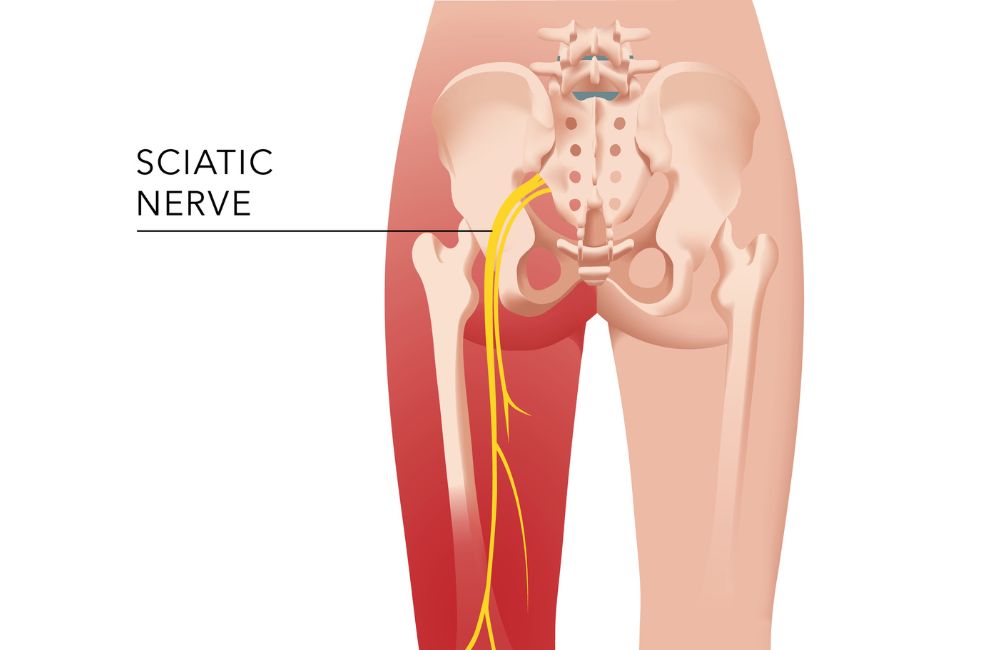
Sciatica pain starts in the lower back and moves down the legs. Relieve the deep sciatica pain with these simple stretches and exercises.
Sciatica is one specific issue that affects the low back and legs. This ailment often causes unbearable pain and weakness that can make it almost impossible to get through the day.
Fortunately, by understanding what sciatica is, and by learning some easy stretches that can address the underlying issues that have led to the condition, you can start feeling better in no time!
You may also like:
Want To Live Pain-free? Do These Hip and Lower Back Stretches Every Day
How To Get a Deep Piriformis Stretch To Get Rid of Sciatica Pain
Sciatica Explained
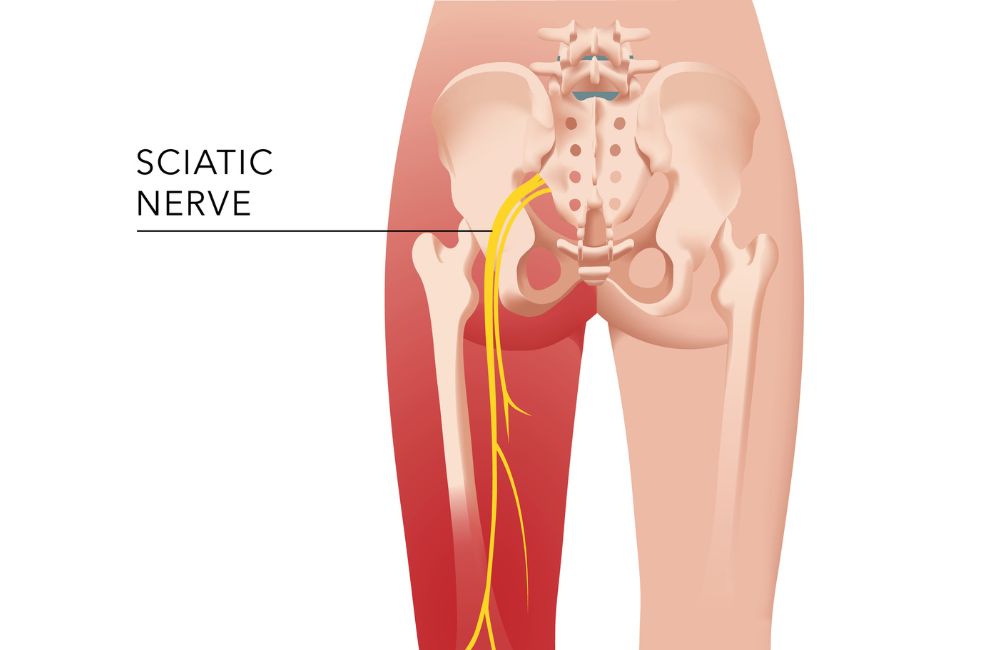
Sciatica refers to irritation of the sciatic nerve: the longest nerve in the body.
The sciatic nerve runs from the low back all the way down to the foot on both sides. Along its path, it weaves between muscles, branches off onto various body structures, and becomes thinner and thinner as it nears its final destination.
If any structures impede the nerve on its path down the leg, the nerve can become irritated. Irritation of the sciatic nerve is known as sciatica.
What are the Symptoms of Sciatica?
With any nerve-related issue, the symptoms tend to be fairly consistent.
Sciatica causes any or all of the following in the leg and low back, depending on where it is pinched and how severely its path is blocked.
- Burning.
- Numbness.
- Tingling.
- Throbbing.
- Vague pain.
- Weakness.
The last point above, weakness, is a particular concern for sciatica sufferers.
One of the most common complications of sciatica is foot drop. Foot drop is a condition in which the muscles that lift the foot up while walking can’t perform their function. As a result, the patient drags their foot, and they may trip when walking.
Also, if symptoms of sciatica persist, the nerve tends to have a tougher time healing. People who have had sciatica for months or years may have a long road to recovery than those who only had the condition for a few weeks.
For this reason, people with sciatica need to find effective treatments before their symptoms progress past the point of no return!
What are the Best Treatments for Sciatica?
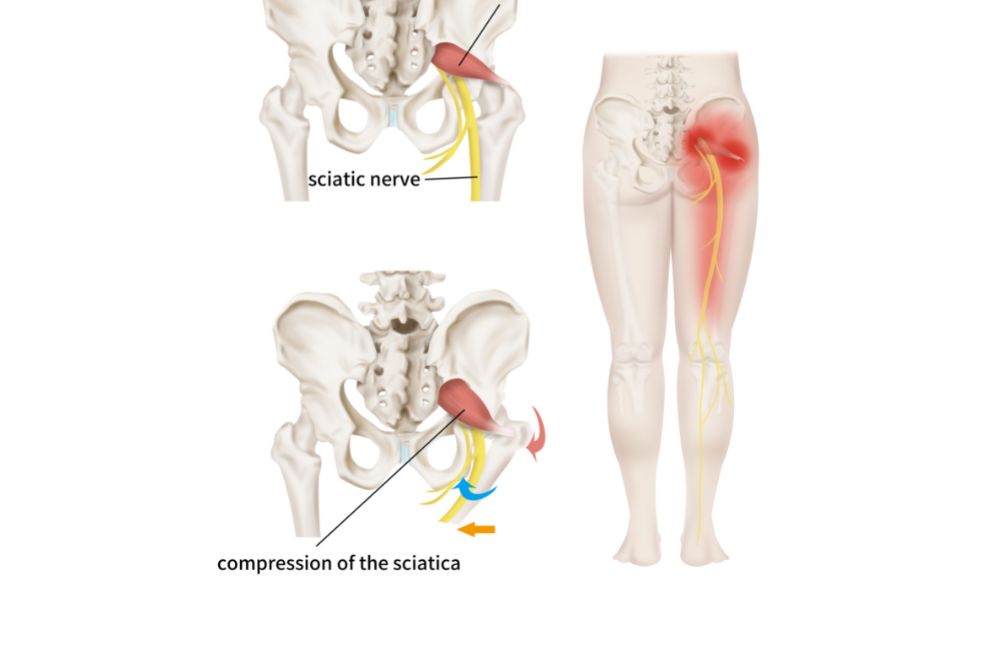
There are numerous ways to go about treating sciatica, depending on what specifically is causing the syndrome.
If the issue is the result of a herniated disc in the back, you may decide to go for the surgical option. Surgeons can cut out a portion of the disc, relieving the pressure on the nerve.
Other patients may decide to simply treat the symptoms with medication. There are a variety of medicinal options that can dull the pain or discomfort caused by nerve pain.
However, both surgery and medication pose serious risks to patients. Many people with sciatica are desperate to find a more risk-free solution to their nerve issues, and they may take drastic measures that can cause worse problems for them.
But there is good news! Exercise is one of the best, most research-backed solutions for sciatica symptoms. Let’s take a look at some of the best stretches and movements that can help you overcome sciatica today!
Exercise and Stretching for Sciatica
As a disclaimer: not all forms of sciatica will respond well to stretching and exercise. If you find that your symptoms increase or don’t get better, no matter which exercises and movements you perform, you should be sure to follow up with a healthcare provider.
That being said, for most cases of sciatica, the following stretches are a great place to start, and they can help significantly with symptoms.
1. Piriformis Stretch (Modification 1)
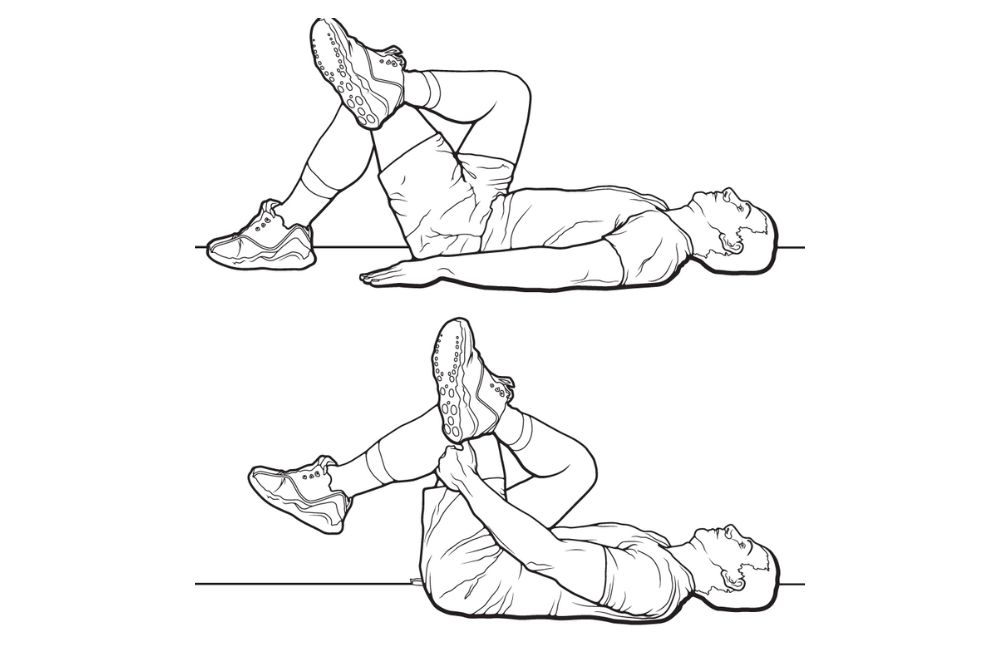
The piriformis is one of the most common areas that can pinch the sciatic nerve. For this reason, I’ve provided two different modifications for this stretch. This first version is a little bit more intense than the other, so be sure to proceed with caution!
How to Perform
- Lie flat on your back, with your knees bent and your feet flat on the floor.
- Place the outside of your right ankle on your left thigh, right above your left knee.
- Place your hands on the back of your left thigh, with your fingers intertwined.
- Pull your left leg toward your chest, bringing your right leg along for the ride.
- Once you’ve reached a point of moderate discomfort, hold the stretch for 30 seconds.
- Repeat 4 times on each side, per session. Complete at least 1 session a day.
2. Piriformis Stretch (Modification 2)
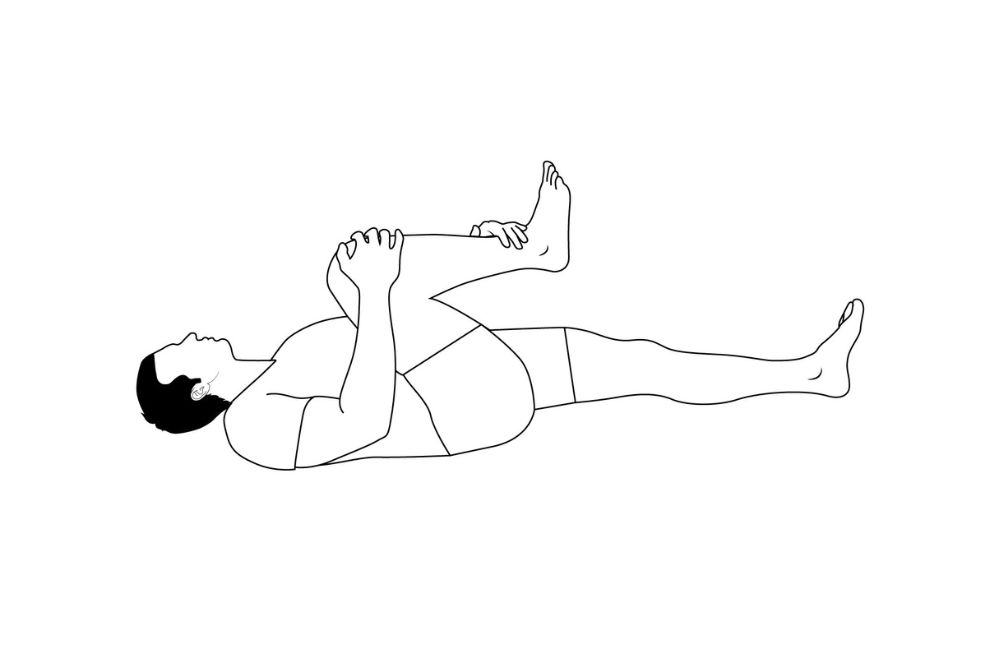
This variation on the piriformis stretch is more gentle than the previous option. Therefore, if your symptoms are very intense, or you are extremely inflexible, this is likely the better stretch for you. However, there is nothing wrong with doing both stretches if they feel good!
How to Perform:
- Lie flat on your back, with your left leg out straight and your right knee bent, foot flat on the floor.
- Bring your right knee toward your chest and gently grasp your right knee with your right hand and your right ankle with your left hand.
- Gradually pull your right knee toward your left armpit.
- Once you’ve reached the point of moderate discomfort, hold the stretch for 30 seconds and repeat 4 times on each side per session. Complete at least one session per day.
3. Prone on Elbows
Extension-based movements, like prone on elbows, are usually very helpful for many cases of back pain. Prone on elbows is a very gentle, starter exercise for those suffering from any sort of lumbago.
How to Perform:
- Lie on your stomach.
- Prop yourself up on your elbows, aiming for moderate discomfort in your low back area.
- Hold this position for 1-2 minutes per session, performing 2-3 times per day.
Conclusion
Sciatica is a terrible condition that can cause extreme pain and discomfort. Luckily, there are a few key exercises that can help you move past this condition and get your life back. Try out this series today!
Works Cited
- Koes, B. W., van Tulder, M. W., & Peul, W. C. (2007). Diagnosis and treatment of sciatica. BMJ (Clinical research ed.), 334(7607), 1313–1317. https://doi.org/10.1136/bmj.39223.428495.BE
- Gordon, R., & Bloxham, S. (2016). A Systematic Review of the Effects of Exercise and Physical Activity on Non-Specific Chronic Low Back Pain. Healthcare (Basel, Switzerland), 4(2), 22. https://doi.org/10.3390/healthcare4020022


